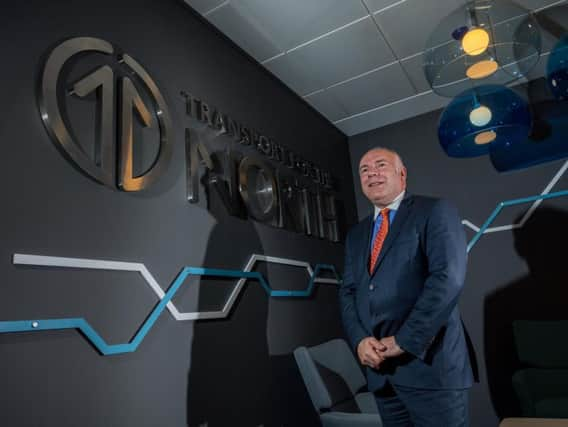Finding 20,000 skilled workers for Northern Powerhouse Rail is a bigger worry than funding, says transport chief


Tim Wood, Transport for the North's director in charge of the high speed network between the big cities of the North, said 20,000 people would be needed to deliver the scheme by the late 2030s.
And he said transport officials would need to work with northern universities and further education colleges to produce the required engineers for the projects as well as those with the digital skills required for a state-of-the-art railway.
Advertisement
Hide AdAdvertisement
Hide AdHis warning at the Transport for the North conference in Sheffield came as a leading metro mayor, the Liverpool City Region's Steve Rotheram, warned that if NPR were to start now the region wouldn't have the skills base to deliver it.
Last week political and business leaders gave the green light to the business case for Northern Powerhouse Rail, which includes a new line between Leeds, Manchester and Birmingham, being submitted to the Government.
The scheme would cut journeys from Leeds to Sheffield from 43 minutes to 28, with four fast trains an hour instead of the current one, and cut Leeds-Manchester journey times from 46 minutes to 25, with six fast trains an hour.
Advertisement
Hide AdAdvertisement
Hide AdMr Wood said if the scheme got the go-ahead, it would mean as much as £2.5bn being spent in one year compared to the £2.9bn being spent over five years on the trans-Pennine route upgrade.
He said: "It means jobs, it means that legacy, it means working with those universities and other educational establishments and really driving this hard, and telling the contractors, boom and bust in the railway, in NPR, is over. We are all nose to the grindstone every day of the week for the next 20 years."
But he added that in the next 15 years the railway industry will lose half its workforce to retirements or people moving onto new jobs.
Advertisement
Hide AdAdvertisement
Hide AdHe said: "My biggest issue, in my mind, is not the money, it is the skills. It is about the 20,000 people I will need to build Northern Powerhouse Rail.
"Don't forget at the same time, High Speed 2 Phase 2B in the North will also be being built, and also you will have Network Rail with what they will be doing with maintenance works, renewal works.
"That is why Transport for the North called for us to be the guiding light, to pull these programmes together and look to co-client those as we have done with Northern Powerhouse Rail.
"You might ask, what is co-clienting? Co-clienting is, I have an opposite number in the Department for Transport, we work together to develop this programme of work.
Advertisement
Hide AdAdvertisement
Hide Ad"It is all very open, very collaborative, that is how we got to this stage where we are at the moment, you have got to be in that frame of mind, if you're not you are not going to get there."
Describing the importance of attracting people to work in the rail and infrastructure industries, Mr Wood said: "My son is just going to be finishing off his A-levels and it's more: 'I want to for Google, I want to work for Microsoft', the railway industry, he's not tempted.
"The bottom line is the rail industry is going to be really sexy. If High Speed 2 was running today it would be the fastest train in the world.
"We need all those digital skills, those software designers, to make sure that train delivers on the promise we have set ourselves.
Advertisement
Hide AdAdvertisement
Hide Ad"How is the technology going to work when the train starts talking to the next trains? But about my NPR trains, how will they talk to the HS2 trains? Because I am going to have HS2 trains on my network, they are going to be delivering some of my NPR services.
"That is why I need HS2 , it is that seamless integration, what I will need right across the piece, I will need a lot of mechanical machinery, I have a target to actually get this whole network in by the late 2030s."